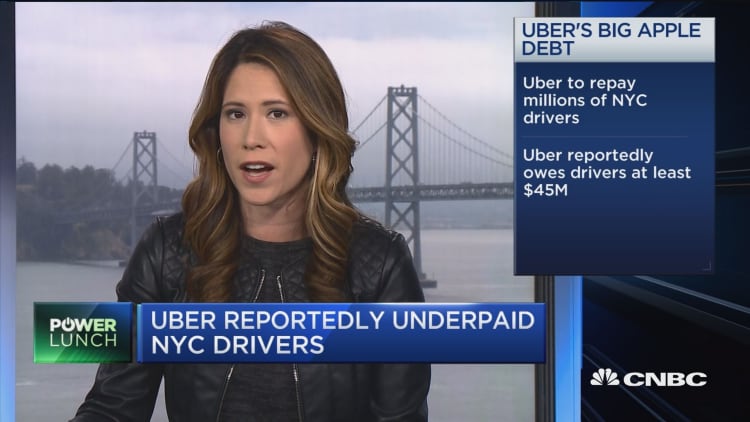Uber may be under pressure in the press — but its business model is still on track to dominate and "ultimately eclipse" the taxi market, according to a new analysis from Goldman Sachs.
Uber, alongside companies like Lyft and China's Didi
Ride-hailing will grow eightfold by then and could be five times the size of the taxi market, justifying the giant valuations, the report said. At $68 billion and $50 billion, respectively, Uber and Didi are the two most highly valued venture-backed companies, according to data firm CB Insights.
Central to the growth of this industry, according to Goldman Sachs, is the proliferation of self-driving cars.

"We model a scenario in which a fleet manager could generate
As the technology advances, it will automatically route cars to areas with the most demand, the report said. It also eliminates the need for driver subsidies.
Challenges to the model
But even as it takes over the taxi industry, there are some serious challenges for a company like Uber — which counts Goldman Sachs as an investor — to succeed in winning in autonomous driving.
Like Uber investor Bill Gurley, Goldman expects "wealthy Asian capitals" to be the epicenter of ride-hailing growth when it comes to autonomous vehicles, because of the impetus of population density and pollution. The Asian market has proven difficult to crack for almost everyone except Didi
Uber's self-driving technology development may also be hampered by Alphabet's lawsuit, which alleges an Uber engineer stole designs for key sensors. Regulations by cities,
Then there are the job losses that will come from the rapid rise of autonomous vehicles. In a separate report this week, Goldman Sachs estimated that at the peak of autonomous car saturation, America's professional drivers could lose up to 25,000 jobs a month.

"Ride hailers need to recruit drivers to
Despite the issues facing Uber, investor Jason Calacanis told CNBC's "Squawk Alley" on Wednesday that he thinks the company is on the mend.
"It's fair that they've had a rough year," said Calacanis, who backed the company in its very early days. "It's making the management team more resilient and more focused, and it's creating a massive culture evolution at the company. I am more bullish than I've ever been, and more bullish on the management than I've ever been."


